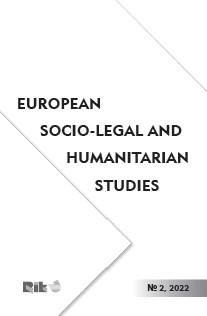DIRECT MODEL OF INDIGENOUS REPRESENTATION: THE CASE OF MĀORI
DIRECT MODEL OF INDIGENOUS REPRESENTATION: THE CASE OF MĀORI
Author(s): Anton OpanasenkoSubject(s): Cultural history, Constitutional Law, Civil Society, Social history, Cultural Anthropology / Ethnology, Ethnic Minorities Studies
Published by: Editura U. T. Press
Keywords: New Zealand; Aotearoa; Māori; Native; Indigenous; Aboriginal;
Summary/Abstract: The article provides a brief classification of models of representation of indigenous peoples: direct, which is used by the Māori people in New Zealand, and indirect, which is used by the Sámi people in the countries of Fennoscandia. The publication then explores the specifics of the application of the direct representation model in New Zealand. The peculiarity of the representation of the Māori people within legislative, executive and judicial bodies of the country, as well as local self-government bodies, is explained. The article describes in detail the procedure for creating separate Māori constituencies for parliamentary and local elections, the peculiarities of forming the Māori electoral rolls for the participation of representatives of this people in elections. Thanks to the historical analysis of the process of changes in the legislation of New Zealand in this area, positive trends are revealed that confirm the democratization of the country’s electoral procedures, as well as a shift in the focus of attention during the electoral process from ethnicity to the choice and identity of the individual. The publication also examines the role and functions of the Ministry for Māori Development and its place within New Zealand’s executive branch of government. In addition, special attention is paid to the implementation of the Māori right to land in the aspect of the Māori Land Court, which was created to re-solve the problem of inconsistency between the traditional Māori collective form of land ownership and individual land titles typical for European legislation. The article proves that the level of preservation of the heritage of indigenous peoples and their identity largely depends on the political will of legislators and the state. The right to self-determination in this aspect should be considered as primary, in relation to other derivative rights that arise from it. At the same time, the realization of this primary right depends precisely on the level and quality of the implementation of the specific above-mentioned derivative rights in various spheres of life that the indigenous people and their representatives face on a daily basis.
Journal: European Socio-Legal and Humanitarian Studies
- Issue Year: 2022
- Issue No: 2
- Page Range: 137-149
- Page Count: 13
- Language: English

